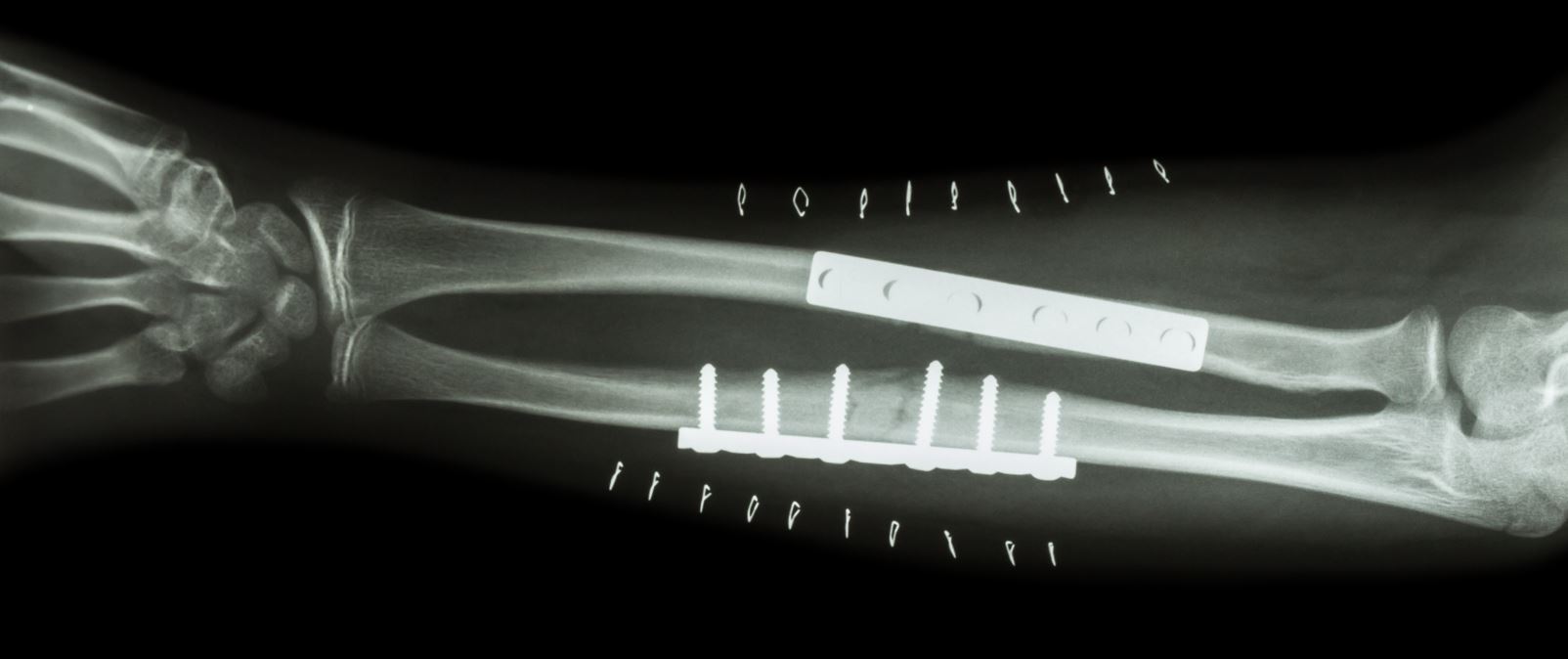
Treatment Methods for Fractures – Complex, Open & Closed
The term “complex fracture” describes a broken bone that is more severely traumatized than what would be described as a simple fracture. A complex fracture happens when the bone is broken into many pieces and the surrounding tissue and cartilage is damaged as part of the trauma. Some people are more at risk for experiencing a complex fracture including athletes, aging adults, and women over the age of 60. Santa Rosa Orthopaedics trauma specialists are more likely to treat complex fractures than may be other orthopaedic specialists, due to the nature of their expertise.
Complex fractures are complicated and require a unique treatment plan for each patient. Broken bones are considered to be complex when:
- The cartilage at the joint has been severely injured
- The bone fragments are broken into many pieces
- There are multiple fractures at several levels within a single bone
- The surrounding soft tissues has also been damaged
- Loss of bone is present due to the severity of the trauma
- There is an associated joint dislocation
The injury of a complex fracture which causes damage to multiple bones, joints, ligaments and tendons means that treatment, rehabilitation and recovery for the patient is intense and unique to each patient. Complex fractures are approached by a trauma surgeon in a variety of ways, depending on where and how the injury occurred on the body.
Complex vs Open Fractures
An open fracture, also called a compound fracture, is a fracture in which there is an open wound or break in the skin near the site of the broken bone. Most often, this type of wound is caused by a fragment of bone breaking through the skin at the moment of the injury.
An open fracture requires significant treatment and differs from a closed fracture (when there is no open wound). Once the skin is broken, bacteria from dirt and other contaminants can enter the wound which can lead to serious infection. For this reason, early treatment for an open fracture focuses on preventing infection at the site of the injury. The wound, tissues, and bone must be cleaned out in a surgical procedure as soon as possible. The fractured bone must also be stabilized to allow the wound to heal.
Putting Bones Back Together
Whether the fracture is open, closed or complex, most all fractures are corrected using metal implants—such as plates, rods, or screws, which are placed on the surface of or inside the broken bone. This kind of an implant supports the position of the bone and helps to hold it together while the fracture heals. These devices can be applied internally and externally to an injured limb. In fact, most severe open fractures are first stabilized with external fixation.
The use of an external fixator makes it possible for the surgeon to stabilize the broken bone so that the damage to surrounding tissue can be treated. In some cases, the wound may need further debridement or skin and tissue grafting to cover the injured bone, which takes time. With an external fixator in place, the patient can often get out of bed and be mobile despite the open wound.
In most cases, an external fixator is kept in place only until it is safe to perform internal fixation. Sometimes, however, an external fixator is used to stabilize the bones until healing is complete. It is then removed during a second procedure when the fracture is healed. Once the bones have been restored with rods and screws the injured limb is immobilized in a sling cast or splint until the fracture fully heals. Patients then receive a course of antibiotics to help prevent infection.
After the injury has healed, rehabilitation will be necessary to regain motion and mobility. Based on the severity of the injury and where the injury occurred on the body, a personalized rehabilitation program is designed for the patient. Performing specific exercises both during and after the healing process is essential to help restore muscle strength, joint motion, and flexibility.
Information provided by OrthoInfo
Orthopaedic Trauma & Fracture Care Team
Nobody wants to think about having an accident or enduring a sudden injury, and when the worst happens SRO’s Trauma Team are the healthcare professionals you will want in your corner. The spectrum of cases treated ranges from patients with a single fracture to those suffering from multiple, life-threatening musculoskeletal injuries. State-of-the-art techniques are used in the treatment of associated injuries to nerves and blood vessels and incidents involving soft tissue loss. Learn more…

